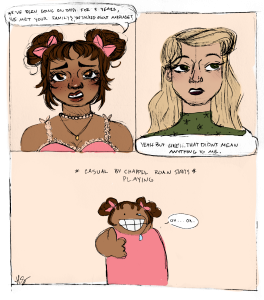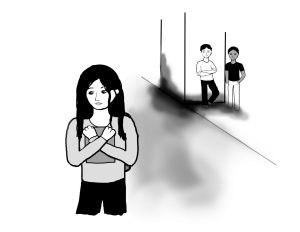“Faceless Killers”
Henning Mankell
Vintage Crime/Black Lizard, 280 pages
1991
Sweden has been having a very good run lately–in terms of publishing, at least. The creepy-cute vampire drama of “Let the Right One In” has been made into two films (one from Sweden, one from the U.S.; I’ve heard the American version is quite good, but I’m wary of seeing it after how incredible the Swedish film was), and Stieg Larsson’s Millenium Trilogy is getting the same treatment. Vintage Crime will tell you that they’ve been on this trend since the 90s, although technically it wasn’t the same trend.
Henning Mankell’s Kurt Wallander mysteries are very stereotypically Swedish in the sense that the style and content are remarkably similar to the works mentioned previously. The writing is bleak and sparse (although that could, admittedly, be a peril of the translation), and the environment described in the novel is cold, wintry and grey (even, apparently, in the summer). Also, people die, and rather horribly. From this collection of novels, one would think Sweden has quite the crime problem.
Kurt Wallander is a policeman in Ystad, a city in southern Sweden. He is called in one night to the site of a violent murder of an elderly couple in an isolated farmhouse in the countryside. The woman’s dying words? Foreign–sparking an already-dangerous situation in an anti-immigrant Sweden.
“Faceless Killers” is a police procedural, and as such there is quite a bit of Wallander sitting at his desk shuffling paper around or meeting his fellow police inspectors to do damage control. The crime is a puzzle, and any attempt from the police to defuse the anti-immigrant sentiment is met with resistance from both the Swedish press and the citizens themselves. Wallander, at one point, begins receiving threatening calls from racist groups accusing him of being too lenient on the immigrants. The press, meanwhile, is accusing the police force of racism and failure to protect the immigrants. It’s a nasty situation. Racism in Sweden, at least in the early 90s, was a problem.
There is also quite a bit of Wallander’s personal life–which, incidentally, is a complete mess. His wife has left him, his daughter doesn’t speak to him any more and he’s become rather obsessed with the pretty ADA from Stockholm. Mankell spends a couple of paragraphs every chapter or so discussing Wallander’s bowel movements. They’re uncomfortable, to say the least. Wallander’s failure to change his diet–always brought up in the context of his uncomfortable bowel movements–is a poor reflection of his general failure as a human being. He’s managed to estrange both his wife and daughter, he’s getting nowhere on this case, his drinking is getting out of control and he can’t even manage to eat a salad. As a ploy to generate sympathy, it almost works. For the most part, unfortunately, it’s just frustrating.
Wallander’s only redeeming quality is his determination, but even this is not the type of determination that can be linked to virtue. It is closer to the determination of a squirrel digging a hole in the ground despite the fact that there is not, and never was, a nut buried beneath the dirt. He solves the mystery–this is crime fiction, after all–but the solution is strangely unsatisfactory. By the end of the novel, Wallander wants to believe that his life is better, that somehow he’s changed, but the truth is far more depressing.












